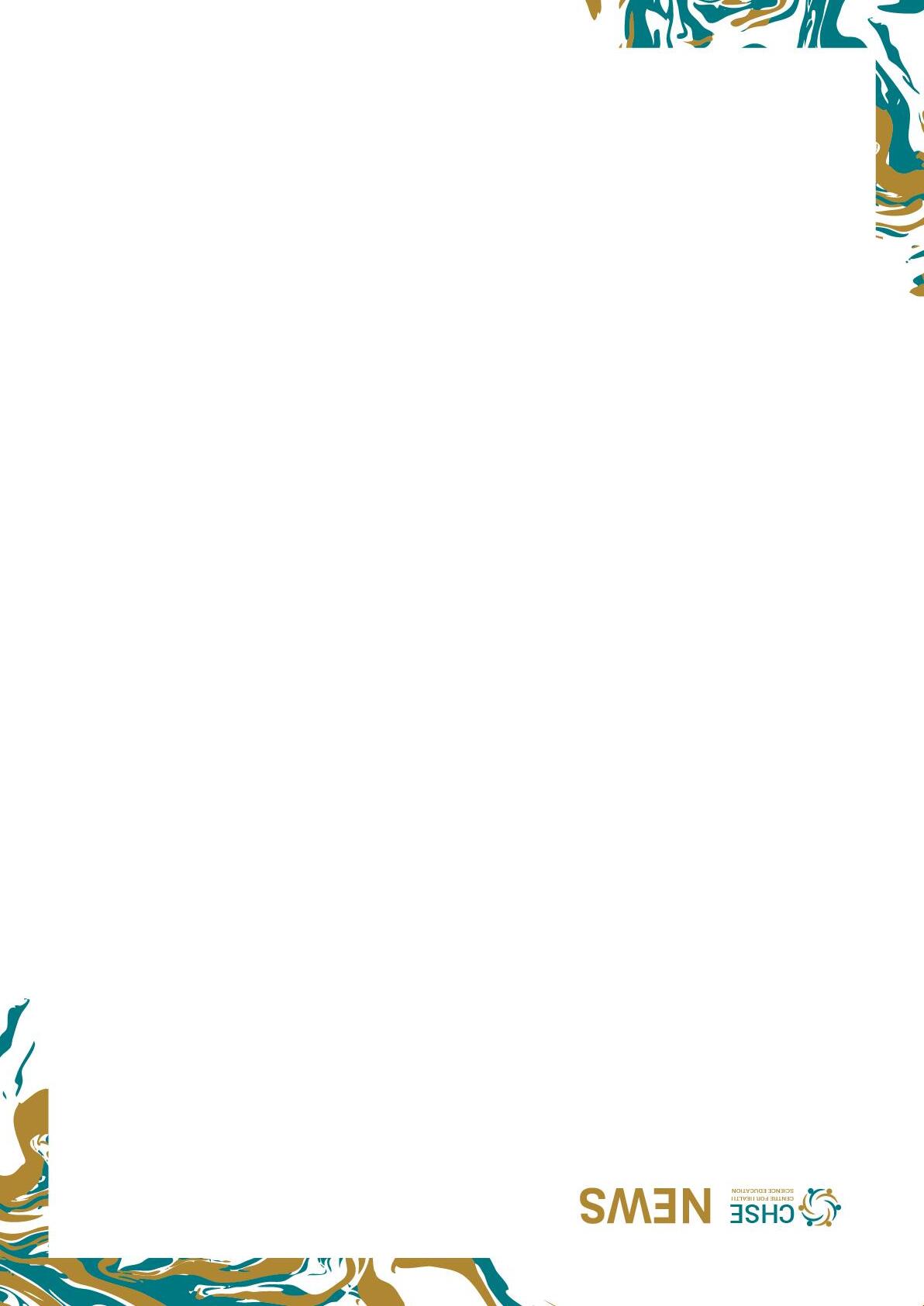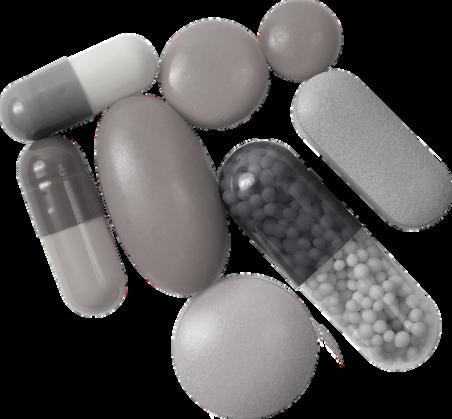

WITS HEALTH SCIENCES Review



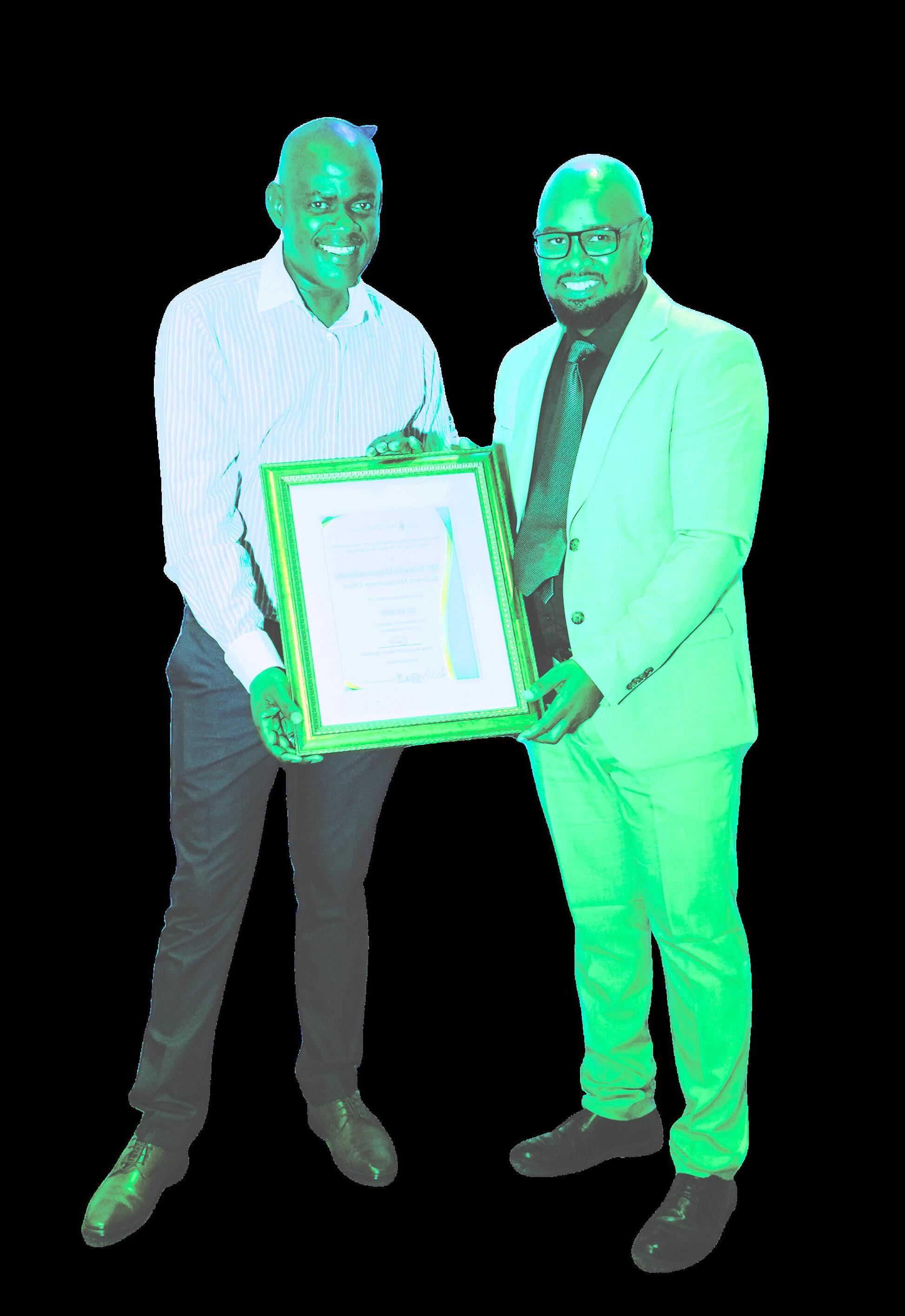


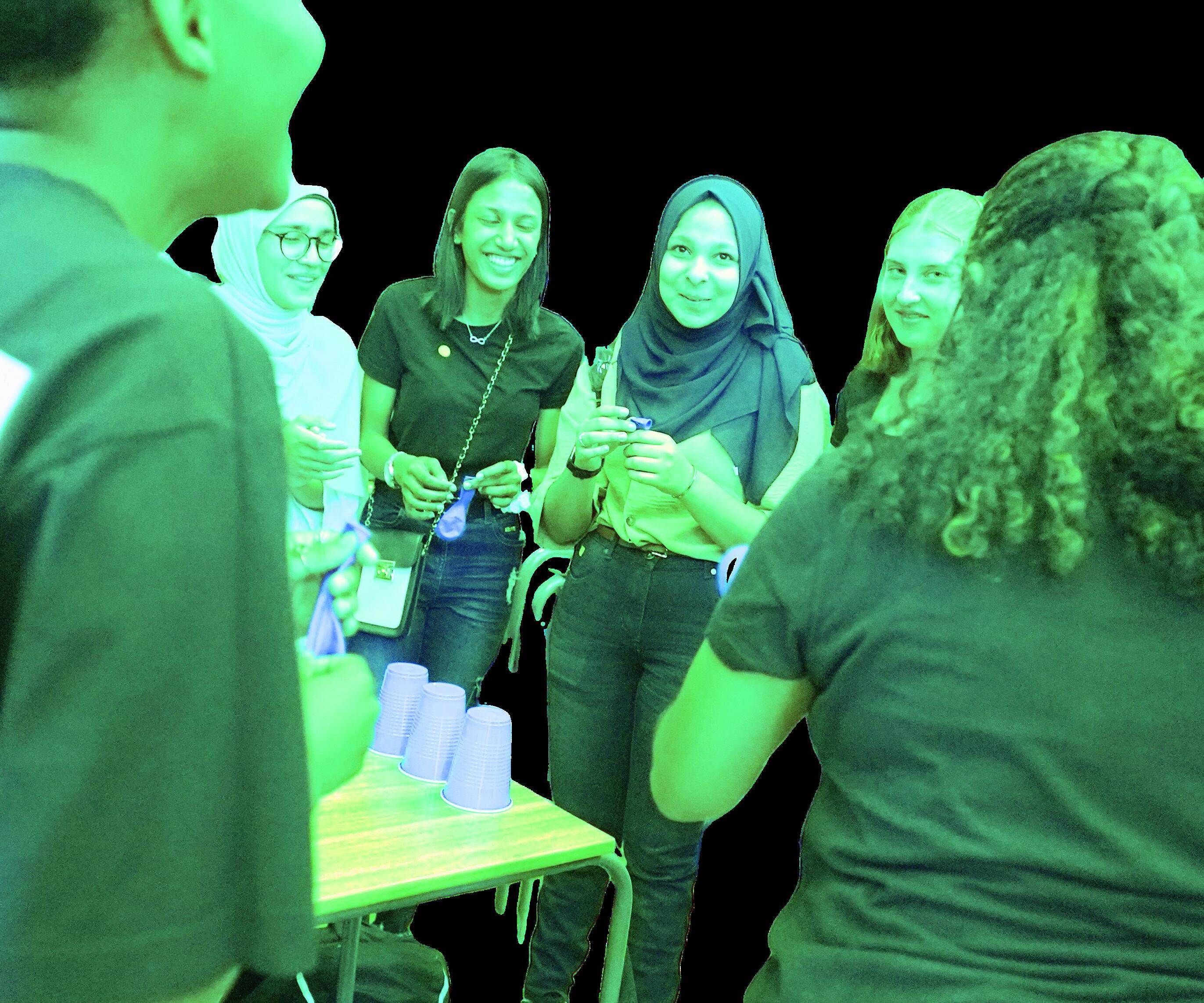


Greetings from the Dean
Dear reader,
It is with great pleasure that we present to you the latest edition of our Health Sciences Review, where we delve into the transformative power ofinquiry and exploration. The first quarter of 2024 has passed and the academic programme is in full swing It is largely through the efforts of the academic, professional and administrative staff, together with the diligence of our students, that we are on track for yet another successful academic year
As highlighted in the revamped quarterly Wits-FHS newsletter, the Faculty can pride itself on the service and accomplishments of our staff, including five leading FHS researchers who received awards from the South African Medical Research Council in recognition of their excellence in research The high calibre of research in the Faculty is also evident in the numerous research articles in leading international journals that deal with a diversity of research Some of the research findings highlighted in this newsletter include research on non-communicable diseases, studies on the human genome, advances in the prevention of HIV and mental health well-being of adolescents
Faculty members also continue to be acknowledged internationally for their expertise by being elected as members of international academies and committees, highlighting the global impact and recognition of their research.
The annual FHS Awards Evening held in February was special and faculty members were honoured for excellence in service, teaching and research. Long-serving staff members were also acknowledged, some of whom have been around for over 35 years! It seems that despite my having started as a student at Wits in 1985, I still have some way to go before I can join the ranks of Faculty members who have dedicated their entire working lives to Wits in the course of training healthcare workers
“Once a Witsie, always a Witsie” was also a theme evident at the 40th anniversary reunion of the Wits Dental School Class of 1984
This reunion comes at a time when the Oral Health Sciences programme at Wits continues to face challenges – we need a new Dental Hospital to ensure that the legacy of Wits being host to the oldest Dental School on the continent can be upheld The University continues in its efforts to ensure that the Oral Health Sciences programme at Wits remains sustainable and advances in the future
We have the privilege of sharing an interview with Emeritus Professor Joe (Yusuf) Veriava in this newsletter He trained at Wits during the dark years of apartheid (1962-1968) and subsequently dedicated his entire career to the training of internists at Wits He recognised the harm that apartheid policies had on the health of individuals and was a stalwart in the anti-apartheid movement who championed the rights and dignity of all South Africans This interview comes at a moment in history where we are witnessing the unprecedented destruction of healthcare facilities and the deaths of hundreds of healthcare and aid workers in Gaza, Palestine
As a healthcare worker who took the Hippocratic Oath almost 36 years ago at this University, and one who is now responsible for administering the oath to graduating healthcare workers at Wits, it would be remiss of me not to emphasise the importance of protecting the rights to health and life of all individuals; irrespective of race, religion, caste, social class or ethnicity. As a healthcare worker, I believe that there should be unhindered access to healthcare for the injured and women delivering babies, that healthcare facilities should be safeguarded, and that humanitarian aid should be delivered to civilians caught in the crossfire. A thought-provoking article on the ethical considerations of whether healthcare workers should make their voices heard on health and humanitarian issues such as was the focus of a recent op-ed by Dr Sandra Fernandes, Head of the Division of Neuropsychiatry at Wits, in the South African Journal of Biomedical Ethics and Law
On a separate note, remember that 29 May 2024 is Election Day and it is incumbent that we as staff and students make our mark, and exercise our right to decide on who is best to govern South Africa for the next five years
With those few words, I hope that you enjoy reading the rest of this newsletter and that it gives you some insight into the remarkable work underway in the Faculty
Regards,
Professor Shabir Madhi Dean: Faculty of Health Sciences




Professor Penny Moore
SAMRC Scientific Merit Gold Award

Professor Wendy Stevens
SAMRC Scientific Merit Gold A d

SAMRC Scientific Merit Gold Award
Professor Steve Tollman
SAMRC Scientific M it G ld A d
SAMRC Scientific Merit Silver Award

Reappointed to the World Health Organization’s World Malaria Programme Guidelines Development Group (GDG) on vector control for another term.

Professor Cheryl Cohen
Dr Jinal Bhiman
Professor Basil Brooke
RESEARCH IN HIGH-IMPACT FACTOR JOURNALS
Tackling the diabetes surge in subSaharan Africa through novel youthcentric strategies
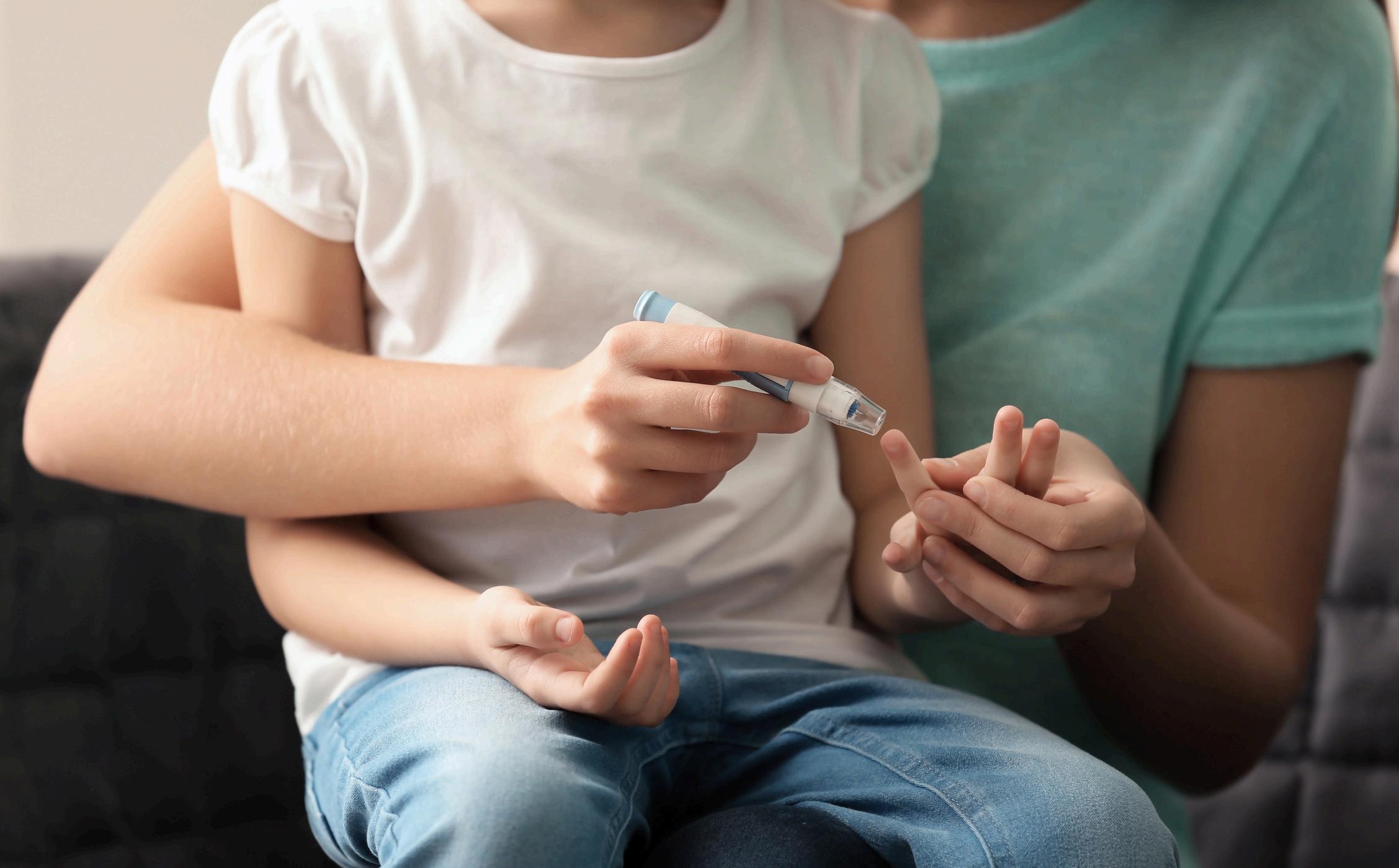
Lancet
Wits researchers involved: Asanda Mtintsilana
Over the past few decades, diabetes in subSaharan Africa has significantly increased. According to a recent Global Burden of Disease Study, published in The Lancet, the agestandardised prevalence of diabetes in subSaharan Africa rose by 83% between 1990 and 2021, reaching 4248 cases per 100 000 individuals Furthermore, projections predict a 57% increase in diabetes in sub-Saharan Africa from 2021 to 2050, reaching a prevalence of 6688 cases per 100 000 individuals. These statistics depict a worrisome picture of an impending public health crisis that demands immediate attention
*Read more via Lancet
The genetic legacy of the expansion of Bantu-speaking peoples in Africa
Nature
Wits researchers involved: Anja Meyer, Maryna Steyn, Himla Soodyall
The expansion of people speaking Bantu languages is the most dramatic demographic event in Late Holocene Africa and fundamentally reshaped the linguistic, cultural and biological landscape of the continent With a comprehensive genomic dataset, including newly generated data of modern-day and ancient DNA from previously unsampled regions in Africa, this paper contributes insights into this expansion that started 6,000-4,000 years ago in western Africa
1,763 participants were genotyped, including 1,526 Bantu speakers from 147 populations across 14 African countries, and generated wholegenome sequences from 12 Late Iron Age individuals The paper shows that genetic diversity amongst Bantu-speaking populations declines with distance from western Africa. Indeed, current-day Zambia and the Democratic Republic of Congo were at the possible crossroads of interaction Using spatially explicit methods and correlating genetic, linguistic and geographical data, this paper provides crossdisciplinary support for a serial-founder migration model. Furthermore, this shows that Bantu speakers received significant gene flow from local groups in regions they expanded into

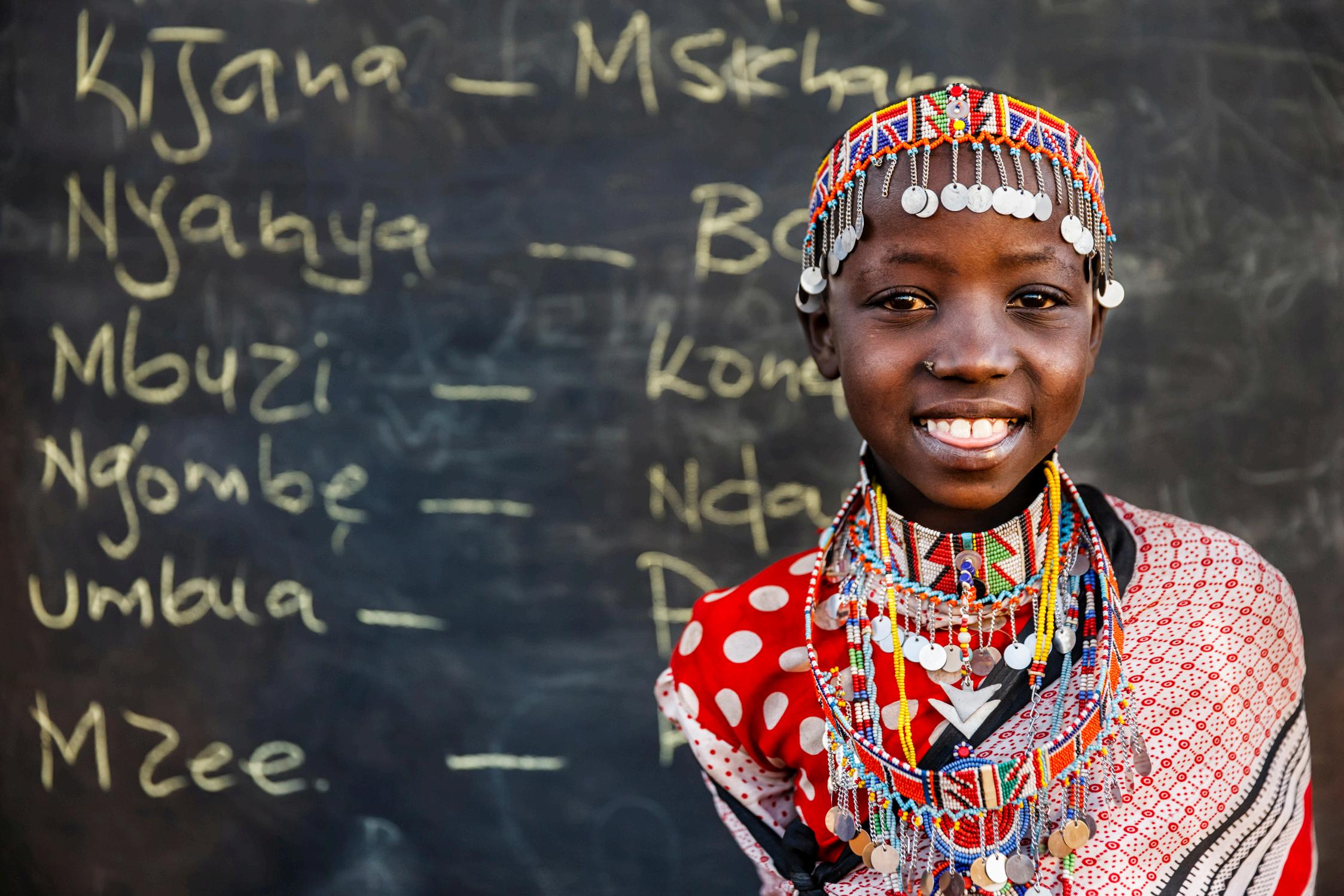
This paper’s genetic dataset provides an exhaustive modern-day African comparative dataset for ancient DNA studies and will be important to a wide range of disciplines from science and humanities, as well as to the medical sector studying human genetic variation and health in African and African-descendant populations
*Read more via Nature
Research in high-impact factor journals
Adherence, safety, and choice of the monthly dapivirine vaginal ring or oral emtricitabine plus tenofovir disoproxil fumarate for HIV preexposure prophylaxis among African adolescent girls and young women: a randomised, open-label, crossover trial
Lancet HIV

Wits researchers involved: Thesla PalaneePhillips, Krishnaveni Reddy
Half of new HIV acquisitions in Africa occur in adolescent girls and young women Pre-exposure prophylaxis (PrEP) with oral tenofovir disoproxil fumarate plus emtricitabine or the monthly dapivirine vaginal ring is efficacious. Still, it has lower adherence and effectiveness among adolescent girls and young women This paper aimed to assess product adherence, safety, and choice of oral PrEP compared with the dapivirine vaginal ring among African adolescent girls and young women.
Methods
MTN-034/REACH was a randomised, open-label, phase 2a crossover trial among HIVseronegative, non-pregnant adolescent girls and young women aged 16-21 years at four clinical research sites in South Africa, Uganda, and Zimbabwe Participants were randomly assigned (1:1) to either the dapivirine vaginal ring or daily oral PrEP (200 mg of emtricitabine and 300 mg of tenofovir disoproxil fumarate) for 6 months, then switched to the other product option for 6 months, followed by a third 6-month period in which participants were given a choice of oral PrEP, the dapivirine ring, or neither. Fixed block randomisation was used, stratified by site. The primary adherence endpoint was use of each product during the randomised periods, with high use defined as tenofovir-diphosphate concentrations greater than or equal to 700 fmol/punch (associated with taking an average of
four or more tablets per week in the previous month) and greater than or equal to 4 mg dapivirine released from the returned ring (continuous use for 28 days in the previous month) based on residual drug concentrations. The primary safety endpoint was grade 2 or higher adverse events during each randomised period of 24 weeks of ring and oral PrEP
Findings
From Feb 6, 2019 to Sept 9, 2021, 396 adolescent girls and young women were screened, 247 of whom were enrolled and randomly assigned (6 months of the ring followed by 6 months of oral PrEP n=124; 6 months of oral PrEP followed by 6 months of the ring n=123). Median age was 18 years (IQR 17-19) 54 grade 2 or higher productrelated adverse events were reported during oral PrEP and five during dapivirine ring use, with no product-related serious adverse events. High adherence was observed in 753 (57%) of the 1316 oral PrEP visits and 806 (57%) of the 1407 dapivirine ring visits Four women acquired HIV during follow-up
Interpretation
Adherence was moderately high and similar between oral PrEP and the dapivirine vaginal ring with favourable safety and tolerability Oral PrEP and the dapivirine ring are effective, safe, and well tolerated HIV prevention options for adolescent girls and young women who would benefit from a choice of PrEP formulations to meet their needs and preferences
Research in high-impact factor journals
Factors affecting the implementation of calcium supplementation strategies during pregnancy to prevent pre-eclampsia: a
mixed-methods systematic review

British Medical Journal (BMJ)
Wits researchers involved: Justus Hofmeyr
Daily calcium supplements are recommended for pregnant women from 20 weeks’ gestation to prevent pre-eclampsia in populations with low dietary calcium intake. This paper aimed to improve understanding of barriers and facilitators for calcium supplement intake during pregnancy to prevent pre-eclampsia
Design
Mixed-method systematic review, with confidence assessed using the Grading of Recommendations, Assessment, Development and Evaluations-Confidence in the Evidence from Reviews of Qualitative research approach
Data sources
MEDLINE and EMBASE (via Ovid), CINAHL and Global Health (via EBSCO) and grey literature databases were searched up to 17 September 2022. This paper included primary qualitative, quantitative and mixed-methods studies reporting implementation or use of calcium supplements during pregnancy, excluding calcium fortification and non-primary studies
Results
Eighteen reports from nine studies were included in this review Women reported barriers to consuming calcium supplements including limited knowledge about calcium supplements and preeclampsia, fears and experiences of side effects, varying preferences for tablets, dosing, working schedules, being away from home and taking other supplements Receiving information regarding pre-eclampsia and the safety of calcium supplement use from reliable sources, alternative dosing options, supplement reminders, early antenatal care, free supplements and support from families and communities are vital Healthcare providers felt that consistent messaging about benefits and risks of calcium, training, and ensuring adequate staffing and calcium supply is available would up the vitamin’s intake.
Conclusion
Relevant stakeholders should consider the identified barriers and facilitators when formulating interventions and policies on calcium supplement use These review findings can inform implementation to ensure effective and equitable provision and scale-up of calcium interventions
*Read more via BMJ Open
Research in high-impact factor journals
HIV epidemiology, prevention, treatment, and implementation strategies for public health
Lancet
Wits researchers involved: Francois Venter
The global HIV response has made tremendous progress but is entering a new phase with additional challenges Scientific innovations have led to multiple safe, effective, and durable options for treatment and prevention, and longacting formulations for 2-monthly and 6-monthly dosing are becoming available, with even longer dosing intervals possible on the horizon The scientific agenda for HIV cure and remission strategies is moving forward but faces uncertain thresholds for success and acceptability.
Nonetheless, innovations in prevention and treatment have often failed to reach large segments of the global population (eg: key and marginalised populations). These major disparities in access and uptake at multiple levels have caused progress to stall Moving forward, sharper epidemiologic tools based on longitudinal, person-centred data are needed to more accurately characterise remaining gaps and guide continued progress against the HIV epidemic. There should be an increase of prioritisation of strategies that address sociobehavioural challenges to ensure effective and equitable implementation of existing interventions with high levels of quality that better match individual needs.
This paper reviews HIV epidemiologic trends, advances in HIV prevention, treatment, and care delivery; and discuss emerging challenges for ending the HIV epidemic over the next decade that are relevant for general practitioners and others involved in HIV care
*Read more via Lancet
Couples motivational interviewing with mobile breathalysers to reduce alcohol use in South Africa: a pilot randomised controlled trial of Masibambisane
BMJ-British Medical Journal
Wits researchers involved: Alastair van Heerden
Heavy alcohol use among people living with HIV in sub-Saharan Africa can hinder the success of HIV treatment programmes, impacting progress towards the United Nations Programme on HIV/AIDS goals Primary partners can provide critical forms of social support to reduce heavy drinking and could be included in motivational interviewing (MI) interventions to address heavy drinking However, few studies have evaluated MI interventions for couples living with HIV in subSaharan Africa. This paper aims to evaluate the feasibility and acceptability of a couple-based MI intervention with mobile breathalyser technology to reduce heavy alcohol use and improve HIV treatment outcomes among HIV-affected couples in South Africa
Methods and analysis
This paper will employ a three-arm randomised controlled trial to assess the efficacy of couplebased MI (MI-only arm) and in conjunction with mobile breathalysers (MI-plus arm) to address alcohol use and HIV outcomes, as compared with enhanced usual care (control arm). Heterosexual couples aged 18–49 in a primary relationship for at least 6 months who have at least one partner reporting hazardous alcohol use and on antiretroviral therapy for 6 months are enrolled. Participants in both MI arms will attend three manualised counselling sessions and those in the MI-plus arm will receive real-time feedback on blood alcohol concentration levels using a mobile breathalyser. Couples randomised in the control arm will receive enhanced usual care based on the South African ART Clinical Guidelines. Feasibility and acceptability indicators will be analysed descriptively, and exploratory hypotheses will be examined through regression models considering time points and treatment arms.*Read more via BMJ Open
Research in high-impact factor journals

Sexual victimisation, peer victimisation, and mental health outcomes among adolescents in Burkina Faso: a prospective cohort study
Lancet Psychiatry
Wits researchers involved: Guy Harling
Sexual victimisation and peer victimisation are pervasive and increase risk for mental illness
Longitudinal studies that compare their unique and cumulative effects are scarce and have been done predominantly in high-income countries. The aims of this study were to examine the prevalence, prospective associations, and gender differences in sexual and peer victimisation and mental health in a low-income, African setting
Methods
In this prospective cohort study, data were obtained from the 2017 ARISE Adolescent Health Study, a population-representative, two-wave, prospective study of adolescents (aged 12-20 years) from Burkina Faso. A random sample of adolescents was drawn from ten villages, selected to capture the five main ethnic groups, and from one of the seven sectors of Nouna town, Burkina Faso, at two timepoints: Nov 12 to Dec 27, 2017, and Nov 15 to Dec 20, 2018. Standardised interviews were conducted in French or a local language by trained researchers This paper measured victimisation exposure as sexual victimisation, peer victimisation, and polyvictimisation, using lifetime frequency of exposure, and it measured mental health symptoms and disorders using the Kutcher Adolescent Depression Scale, the Primary Care Post-Traumatic Stress Disorder screen IV and 5, and a question on lifetime self-harm and number of incidents in the past year. This paper calculated the prevalence of
victimisation and mental health symptoms and disorders at the two timepoints, and used lifetime victimisation at the first timepoint to predict mental health at the second timepoint using logistic and negative binomial regressions Gender differences were examined using interaction terms.
Findings
Of 2544 eligible adolescents, 1644 participated at time 1 and 1291 participated at time 2 The final sample with data at both timepoints included 1160 adolescents aged 12-20 years (mean 15·1, SE 0 2), of whom 469 (40 4%) were girls and 691 (59 6%) were boys The majority ethnic group was Dafin (626 [39 1%]), followed by Bwaba (327 [20·5%]), Mossi (289 [16·0%]), Samo (206 [13·0%]), Peulh (166 [9·7%]), and other (30 [1 6%]). After survey weight adjustment, sexual victimisation (weighted percentages, time 1, 256 [13 8%] of 1620; time 2, 93 [7 2%] of 1264) and peer victimisation (weighted percentages, time 1, 453 [29·9%] of 1620; time 2, 272 [21·9%] of 1264) were common, whereas polyvictimisation was more rare (weighted percentages, time 1, 116 [6 6%] of 1620; time 2, 76 [5 7%] of 1264) Longitudinally, sexual victimisation was associated with probable clinical disorder (adjusted odds ratio 2·59, 95% CI 1·15-5·84), depressive symptoms (adjusted incidence rate ratio [aIRR] 1 39, 95% CI 1 12-1 72), and symptoms of post-traumatic stress disorder (aIRR 2·34, 1·31-4·16). Peer victimisation was associated with symptoms of post-traumatic stress disorder (aIRR 1·89, 1·13-3·17) and polyvictimisation was associated with depressive symptoms (aIRR 1 34, 1 01-1 77) Girls reported more sexual victimisation (weighted percentages, 130 [17·3%] of 681 vs 126 [11·4%] of 939), boys reported more peer victimisation (weighted percentages, 290 [33 1%] of 939 vs 163 [25 2%] of 681), and there was a significant interaction between lifetime victimisation and gender for probable clinical disorder (F [degrees of freedom 7, sample 376] 2·16; p=0·030).
The
Research in high-impact factor journals
Tuberculosis Sentinel Research Network (TB-SRN) of the International epidemiology Databases to Evaluate AIDS (IeDEA): protocol for a prospective cohort study in Africa, Southeast Asia and Latin America
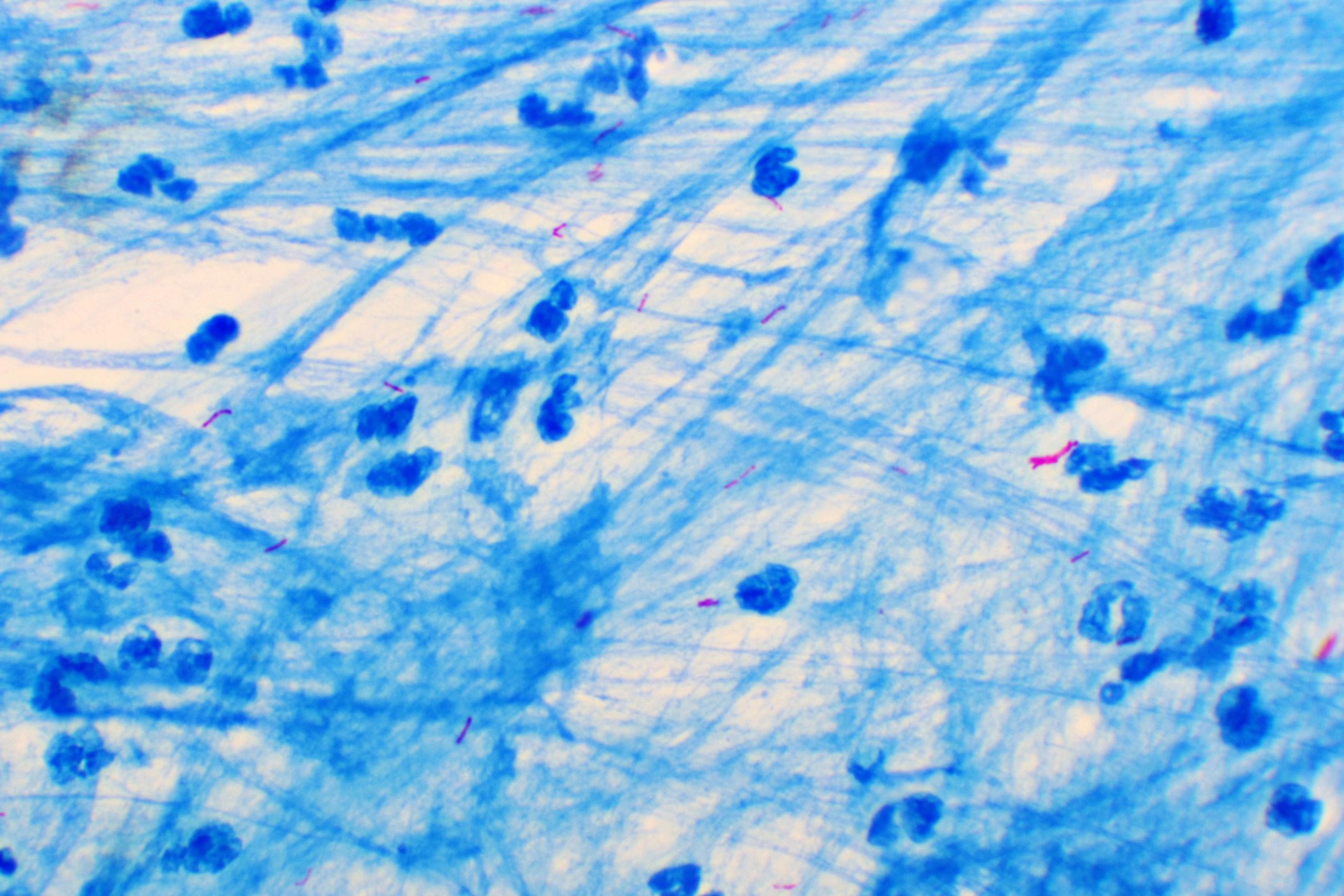
British Medical Journal (BMJ)
Wits researchers involved: Denise Evans
Tuberculosis (TB) is a leading infectious cause of death globally. It is the most common opportunistic infection in people living with HIV, and the most common cause of their morbidity and mortality Following TB treatment, surviving individuals may be at risk for post-TB lung disease. The TB Sentinel Research Network (TBSRN) provides a platform for coordinated observational TB research within the International epidemiology Databases to Evaluate AIDS (IeDEA) consortium
Methods and analysis
This prospective, observational cohort study will assess treatment and post-treatment outcomes of pulmonary TB (microbiologically confirmed or clinically diagnosed) among 2600 people aged ≥15 years, with and without HIV coinfection, consecutively enrolled at 16 sites in 11 countries, across 6 of IeDEA's global regions
Data regarding clinical and sociodemographic factors, mental health, health-related quality of life, pulmonary function, and laboratory and radiographic findings will be collected using standardised questionnaires and data collection tools, beginning from the initiation of TB treatment and through 12 months after the end of treatment Data will be aggregated for proposed analyses
Ethics and dissemination
Ethics approval was obtained at all implementing study sites, including the Vanderbilt University Medical Center Human Research Protections Programme Participants will provide informed consent; for minors, this includes both adolescent assent and the consent of their parent or primary caregiver. Protections for vulnerable groups are included, in alignment with local standards and considerations at sites Procedures for requesting use and analysis of TB-SRN data are publicly available. Findings from TB-SRN analyses will be shared with national TB programmes to inform TB programming and policy, and disseminated at regional and global conferences and other venues *Read
Research in high-impact factor journals
Protocol of an individual participant data meta-analysis to quantify the impact of high ambient temperatures on maternal and child health in Africa (HE(2)AT IPD)

BMJ-British Medical Journal
Wits researchers involved: Darshnika Pemi Lakhoo, Matthew Francis Chersich
Globally, recognition is growing of the harmful impacts of high ambient temperatures (heat) on health in pregnant women and children There remain, however, major evidence gaps on the extent to which heat increases the risks for adverse health outcomes, and how this varies between settings Evidence gaps are especially large in Africa This research conducts an individual participant data (IPD) meta-analysis to quantify the impacts of heat on maternal and child health in sub-Saharan Africa. A detailed understanding and quantification of linkages between heat, and maternal and child health is essential for developing solutions to this
critical research and policy area
Methods and analysis
This research will use IPD from existing, large, longitudinal trial and cohort studies, on pregnant women and children from sub-Saharan Africa. This research will systematically identify eligible studies through a mapping review, searching data repositories, and suggestions from experts IPD will be acquired from data repositories, or through collaboration with data providers. Existing satellite imagery, climate reanalysis data, and station-based weather observations will be used to quantify weather and environmental exposures. IPD will be recoded and harmonised before being linked with climate, environmental, and socioeconomic data by location and time. Adopting a one-stage and two-stage metaanalysis method, analytical models such as timeto-event analysis, generalised additive models, and machine learning approaches will be employed to quantify associations between exposure to heat and adverse maternal and child health outcomes
Ethics and dissemination
The study has been approved by ethics committees. There is minimal risk to study participants Participant privacy is protected through the anonymisation of data for analysis, secure data transfer and restricted access. Findings will be disseminated through conferences, journal publications, related policy and research fora, and data may be shared in accordance with data sharing policies of the National Institutes of Health
*Read more BMJ Open
Cost-effectiveness of intervention combinations towards the elimination of vertical transmission of HIV in limited-resource settings: a mathematical modelling study
Lancet Global Health
Wits researchers involved: Brooke E Nichols
Using the interventions modelled, it is possible to reduce vertical transmission and to costeffectively prevent up to 1734 infant HIV infections (43% reduction) in Zambia over a period of 1 year. To optimise their effect,
these interventions must be scaled with fidelity. Future work is needed to incorporate evidence on additional innovative interventions and HIV risk factors, and to apply the model to other country contexts to support targeted implementation and resource use.
*Read more via Lancet
HOT TOPIC: Social grants
Cash grants help people live longerandhavebettermemory
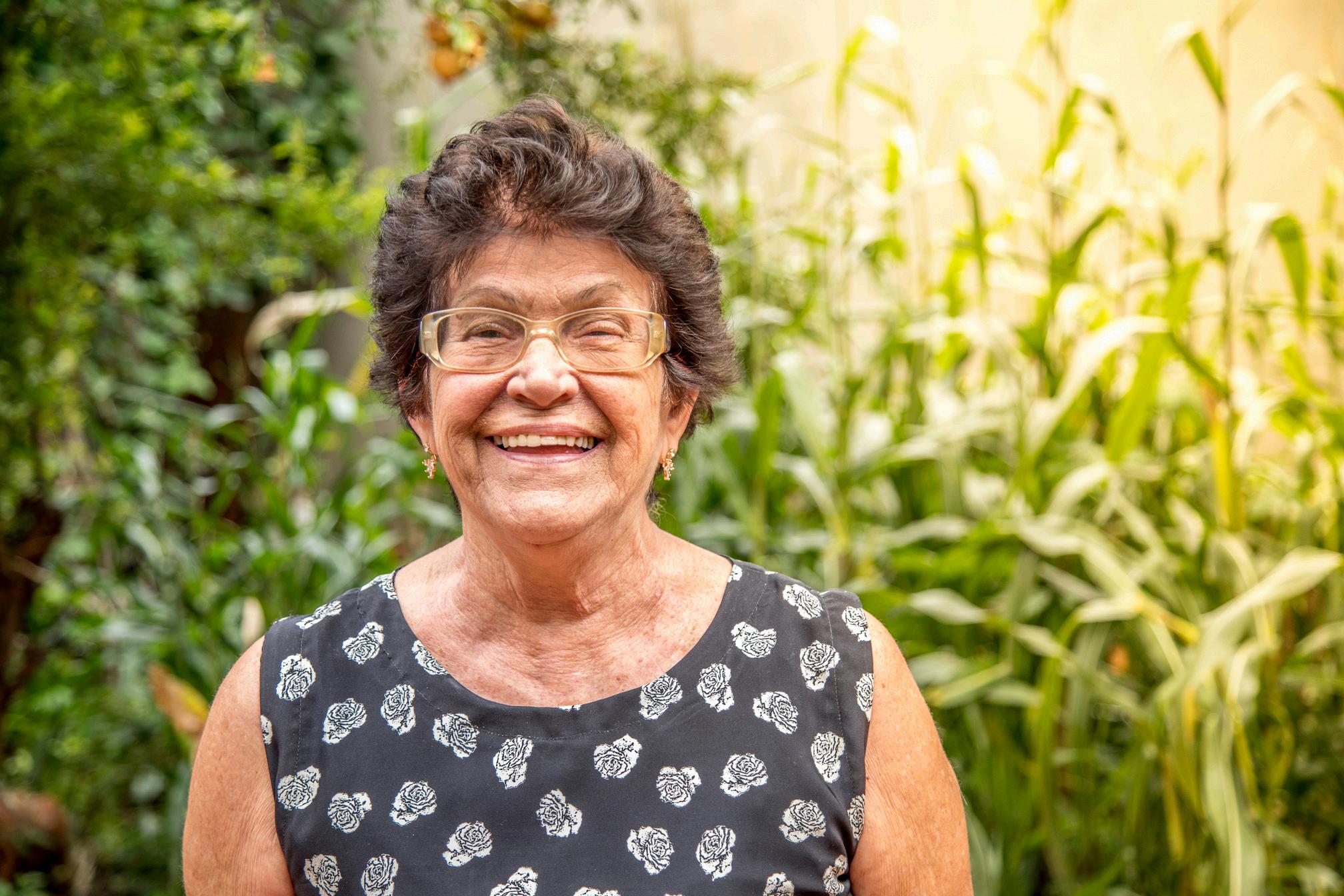
Wits researchers involved: Chodziwadziwa Whiteson Kabudula and Kathleen Kahn
Nearly half of South Africa’s 60 million people receive social grants SA study shows they improve cognitive health among the elderly.
The grants, ranging from child support to pensions, are designed to provide financial assistance to people living in poverty
The largest components of the South African social grant system were introduced, or expanded to include the full population, in the 1990s. Since then, the system has evolved into one of the most comprehensive in the global south.
In addition to their direct financial benefits, the grants have been found to have a wide range of positive effects These include improvements in child nutrition and education, and increased participation of women in the labour force
But the effects of social grants on the health of older adults have not been extensively explored Until now.
Across a series of recent studies conducted as part of an extensive research project in a rural part of South Africa, we have established that social grants can help older South Africans protect their cognitive health and live longer. Cognitive health is the ability to clearly think, learn, and remember
Using our collective expertise into cognitive and population health, we studied the health effects of three different cash transfer programmes in a sample of 5,059 adults 40 years and older in rural Mpumalanga province.
Our results consistently found strong and positive effects thanks to these programmes.
Older people will make up a much bigger portion of South Africa’s population over the next 20 years. Our results provide good news about a social intervention programme the country already has in place to promote health and well-being among older adults.
How we did the studies and what we learnt
The Agincourt Health and Demographic Surveillance System has been collecting data on more than 120,000 people living in 31 villages in north-east South Africa since 1992
This rural campus of the University of the Witwatersrand was established to track and understand health and well-being in these rural environments
The Agincourt project is also a platform for other studies to collect more detailed information on certain community members.
*Read more
HOT TOPIC: Social grants

Shouldpregnantwomen beofferedasocialgrant?

Healthy mothers mean healthy babies Giving pregnant women cash grants could help prevent conditions such as stunting and save the state money in the long run
A baby’s first 1,000 days, from the time of conception until their second birthday, is a crucial window of opportunity to optimise their potential –through healthy nutrition for the mother during pregnancy, and then for the child after birth. Undernutrition during this early period can cause stunting, which has major health and social effects later in life. Stunted children may never reach their full potential, and may suffer from obesity and related diseases for the rest of their lives. This costs the individual their health and their future, and costs governments billions in healthcare spending.
Many studies have shown that pregnancy support grants or vouchers improve women’s nutritional status and their ability to access and benefit from antenatal care. Globally, around 41% of mothers with newborns receive a maternity benefit of some kind. This rises to more than 80% in Europe and Central Asia, but drops to 16% in Africa
Currently, pregnant women in South Africa receive no such benefits. The child support grant, which amounts to R510 (approximately $27) a month, is only paid after a child is born and has a birth certificate.
In South Africa, more than a quarter of children under five (27%) are stunted. Improving pregnant women’s nutritional status – and thus the health of their babies – should be high on the list of priorities for South African policymakers. It would contribute to ending childhood malnutrition, reducing poverty and unemployment and raising future generations of healthy, productive children who, as adults, will drive economic growth. As health economists we wanted to establish whether extending the child support grant to pregnancy would be cost effective for the South African government.
Our research found that it would decrease healthcare costs by R31,200 ($1,600) per baby over the first 1,000 days of life, largely as a consequence of mothers attending antenatal care more regularly and reduced neonatal complications
Applied to the whole population, this would save the government about R14 billion (US$720 million) over the first 1,000 days of children’s lives.
Mothers in need
A large proportion of pregnancies in South Africa (69%) occur in impoverished households Almost half of all pregnancies (46%) occur in femaleheaded households. More than one third (35%) of pregnant women run out of money to buy food, and one quarter of them (25%) experience hunger.
*Read more
Wits researchers involved: Susan Goldstein and Aisha Moolla
What do children needmost?

Wits researchers involved: Chris Desmond
Social workers can help children more effectively by assessing the needs of the whole family.
When people think about children outside their family and close friends, they commonly make basic needs the priorities Food, shelter and services such as health and education come first. When we think of children we have a close relationship with, it’s different We see all their needs as important, immediate and interconnected
People give as much priority to the higher-order needs as the basic needs of children they’re close to.
This thinking carries over into policymaking and intervention priorities in low and middle-income countries As a result, many interventions in the lives of other people’s children, such as responses to a refugee crisis and alternative care for children, put basic needs first.
Our research in the fields of sociology and development economics suggests that children’s needs are not hierarchical and that they are best
HOT TOPIC: Social grants
met by – and in – families. By drawing on examples from the literature, we outline how children’s various needs are equally important Caring for them is therefore a balancing act, best done by those close to them: their families
This way of thinking highlights the importance of supporting families to support children Social services are critical because they have the potential to facilitate the intensive interventions required by the most vulnerable families and children. The quality of such a service will be key in meeting the needs of other people’s children
Family-centred interventions, more often than not, meet the complex needs of individual children.
It is important to note that family can take many forms, not necessarily biological. The key characteristics are connection, proximity and responsiveness to children leading to nurturing care.
In many low- and middle-income countries, the social services workforce is under-resourced, underqualified and overburdened.
The political weakness of the sector and the people they serve make advocating for change difficult Moreover, the task of strengthening the social services workforce may be seen as overly complex and costly.
Helping
families will help children
Highlighting the role of the family draws the discussion towards how best to support the family. We highlight three tiers of support:
*Read more
HOT TOPIC: Social grants
Howcashtransfersand socialgrantshelptheelderly

A ‘whole of society’ approach is needed to address health issues as populations in Africa age
Research from rural Mpumalanga that explores health impacts on ageing populations was presented at Wits University on Tuesday, 6 February 2024 [Click here to watch the livestream recording. Passcode: y+mPHg2n].
Findings can inform health and development policies to achieve better outcomes for those ageing in South Africa and beyond
Ageing and Dementias in Southern Africa: Addressing inequities over the life course showcases the latest research from the HAALSA community study in Agincourt, Mpumalanga HAALSA, underway for some 10 years, stands for Health and Ageing in Africa: Longitudinal Studies in South Africa.
Now in its fourth successive iteration (i e , a longitudinal study), HAALSA is an enduring research project by the SAMRC/Wits Rural Public Health and Health Transitions Research Unit (Agincourt), the Harvard Center for Population and Development Studies, the Southern Africa Labour
and Development Research Unit (SALDRU) at UCT, and the South African Population Research Infrastructure Network (SAPRIN)
HAALSA takes a ‘whole of society approach’ to address vital issues as populations age in African contexts. Since 2014, the research has examined the intersection and impact of HIV/AIDS, chronic non-communicable diseases, and multimorbidity on older people in rural Mpumalanga. In the next study phase, cognitive change, and dementias –affected by these conditions – will be a central focus, and their impacts on social and economic productivity
Professor Steve Tollman of Wits-Agincourt says: “By ‘whole of society’, we mean a comprehensive approach to healthy and productive development right across the life course - from the earliest years, into adulthood and later.
Ending neglect of HIV in older adults
Some of these findings include the fact that sexually risky behaviour in older people can lead to HIV acquisition and transmission. However, there is a dearth of HIV prevention programmes targeting older people, as well as high levels of stigma.
In a recent trial comparing three different types of home-based HIV testing – rapid testing with counselling, HIV self-testing, or both rapid testing with counselling and self-testing – results suggested a preference for HIV self-testing,
*Read more
RESEARCH NEWS

Prof Nelesh Govender in the Wits School of Pathology was elected as a fellow of the American Academy of Microbiology
be elected. However, many excellent microbiologists across the African continent have made important contributions to health in lowresource environments and deserve the same recognition. I’ve been fortunate to work in an institute [the NICD, a division of the NHLS] that has allowed me to build my career in academia alongside my work in clinical microbiology and public health,” he said.
One of 65 awardees, Govender’s prolific scientific achievements and original contributions to advance microbiology led to his selection.
Govender’s expertise lies in clinical microbiology. In particular, he has focused on life-threatening fungal diseases which account for about half of all deaths in people living with HIV Fungal diseases such as candidaemia and aspergillosis also contribute to the deaths of critically ill people in hospitals across Africa.
Govender and his team discovered two novel thermally-dimorphic fungal pathogens (Emergomyces africanus, Blastomyces emzantsi) both causing deadly infections. He led the implementation and evaluation of a national cryptococcal disease screen-and-treat intervention for people living with HIV
“I’m incredibly honoured to join the Academy as a fellow, being one of a few South Africans ever to
Govender noted that despite the high morbidity and mortality rates in vulnerable people related to fungal diseases, the area is mostly neglected in medical research. These poor outcomes for people affected by fungal diseases are attributed to the limited availability of affordable diagnostic systems, poor access to antifungal medicines and insufficient research and innovation Africa has a high burden of HIV and TB as well as serious fungal diseases which are associated with both HIV and TB, requiring fungal diagnoses and treatment to be incorporated into essential care packages.
Trained as a medical doctor and then a clinical microbiologist at Wits, Govender has worked at the intersection of pathology, public health and clinical trials. He co-leads the EFFECT phase III multicentre clinical trial to test whether two antifungal medicines would be better than one to pre-emptively treat early cryptococcal disease among people living with HIV in South Africa, Tanzania and Vietnam. Cryptococcosis is the most
*Read more
Wits Scientist joins an urgent TB vaccine trial kicks off in SA

Professor Lee Fairlie from the Wits Reproductive Health and HIV Institute (Wits RHI) is a Co-National Principal Investigator of the trial.
She joins fellow Principal Investigator, Professor Willem Hanekom from the Africa Health Research Institute (AHRI), who will lead the large Phase 3 trial that will evaluate whether the M72/AS01E vaccine candidate can protect older adolescents and adults from pulmonary tuberculosis
The M72/AS01E vaccine candidate could be the first new TB vaccine in 100 years if proven effective. The first jabs in a much-anticipated clinical trial of an experimental tuberculosis (TB) vaccine have been administered at a clinical trial site at Wits RHI Up to 20,000 people are anticipated to take part in the study, according to study sponsor, the Bill and Melinda Gates Medical Research Institute (Gates MRI).
The M72 study will be conducted at 60 different sites in South Africa, Zambia, Malawi, Mozambique, Kenya, Indonesia, and Vietnam The researchers estimate that between 50% and 60% of the study participants will be in South Africa.
"Reaching Phase 3 with an urgently needed TB vaccine candidate is an important moment for South Africans because it demonstrates that there is a strong local and global commitment to fight a disease that remains distressingly common in our communities," said Dr Lee Fairlie, Director of Maternal and Child Health at Wits RHI at Wits and co-national principal investigator for the trial in South Africa.
"South Africa also has considerable experience with TB- and vaccine-related clinical trials and a strong track record for protecting patient safety and generating high-quality data essential for regulatory approvals."
Explore media coverage on this trial
Spotlight: Massive TB vaccine trial kicks off in SA –it could be the first TB vaccine in over a century
New 24:Huge TB vaccine trial starts in SA. It could deliver first new TB jab in over a century
SAFM Podcast:Huge TB vaccine trial starts in SA It could deliver first new TB jab in over a century
702 Podcast: TB vaccine trial starts in SA
South Africa Celebrates 15 Years of Clinical Associates!

Written by Aviwe Mgobozi & Scott Smalley, Wits Division of Clinical Associates
Clinical associates (ClinAs) are modelled after physician associates (PA) in the United States and clinical officers in Africa. The University of the Witwatersrand accepted 25 students in the first cohort in 2009 with employment starting in 2012. Two other universities offer the 3-year bachelor of clinical medical practice degree, Walter Sisulu University and University of Pretoria. This article documents the nascent healthcare profession’s origins, development, status, and future.
To date there are 1700 graduates employed in public (32%), private (28%), NGO/research (12%) and academia spaces (7%) ClinAs are supervised practitioners, registered with HPCSA, working in healthcare teams in clinics, district hospitals, and tertiary academic level. Studies demonstrate when a ClinA, clinical officer, or PA joins the healthcare team, task-shifting results in similar healthcare outcomes, increased patient satisfaction, reduced waiting times, and reduced workload for other healthcare workers Wits University Division of Clinical Associates embraced the 21st-century health science education
recommendations for competency-based, work-based, interprofessional, and technology-enhanced learning for their ClinA students
The COVID-19 pandemic substantially increased both public and private employment of ClinAs, who joined healthcare teams to triage, treat, and convalesce the more than 4 million patients with COVID-19 during the 3-year pandemic Provincial government hospitals hired ClinAs in COVID-19 units, the ED, and in outpatient, internal medicine, and obstetrics departments. Private fee-for-service clinics, physicians and corporations, such as the mining industry, hired ClinAs
Just before the pandemic, the Professional Association of Clinical Associates in South Africa (PACASA) lodged a complaint to the South Africa public protector office requesting an investigation into the delays and negligence of the health department to respond to the Clinical Associate National Task Team report recommendations of 2017. In 2021, the public protector required the health department to take up the recommendations.
Following COVID-19 delays, PACASA is working collaboratively with the health department and other relevant stakeholders, developing detailed timelines to achieve the much-needed results. In the next decade, South Africa needs to address the challenges of ClinA supervision to combat unemployment, and increase graduate retention by developing career paths
*Read more
TheproblemwithbigcompaniesfundinghealthresearchinSA
By Associate Professor Susan Goldstein
Financial links between corporations, like Nestlé, and health research invariably lead to conflicts of interest.
In 2021, the director of the African Research University Alliance Centre of Excellence in Food Security at the University of Pretoria was appointed to the board of the transnational food corporation Nestlé.
At the time a group of more than 200 senior academics wrote an open letter, about conflicts of interest Nestlé’s portfolio of foods, by its own admission, includes more than 60% that don’t meet the definition of healthy products.
In December last year, the same centre announced it had signed a memorandum of understanding with Nestlé. It signalled their intent to “forge a transformative partnership” to shape “the future of food and nutrition research and education” and transform “Africa’s food systems”
This is not an isolated case. Across African universities, companies with products that are harmful to health fund health-related research and education.
Nestlé, for example, “shares expertise” with “eight universities in Africa”.
THOUGHT LEADERSHIP
personal associations with interested parties make it difficult to distinguish subtle, unconscious bias from deliberately concealed impropriety.”
Other research found that of 168 industry-funded studies, 156 (93%) showed biased results, all in favour of industry sponsors.

In 2018 around 13% of research articles published in the top 10 most-cited nutrition journals were backed by and favourable to the food industry Such backing is often hidden.
A growing problem
The world is facing a pandemic of non-communicable diseases – hypertension, diabetes, cardiovascular diseases, cancer – all linked to the consequences of poor nutrition such as stunting and obesity.
A 2023 Lancet commission reports that “just four industry sectors already account for at least a third of global deaths”, one of which is unhealthy food
These four industry sectors are expanding their markets in Africa and elsewhere in the global south where the inadequate regulation of the sales and marketing of unhealthy foods, drinks, alcohol, tobacco and agrichemical products provides opportunities for corporations to exploit.
*Read more
Thought Leadership

By Associate Professor Shabir Moosa
The emerging role of ketamine in treating mental health issues is a promising development that could bring relief to those who have long suffered in silence
In a world where the struggle against mental health issues rages on, novel treatments have emerged, offering hope and respite to those suffering from depression, suicide, post-traumatic stress disorder, substance abuse, and chronic pain
A recent article in Daily Maverick titled “South African psychiatrists gear up to treat depression with psychedelics” highlights the exciting developments in the realm of psychedelic therapies for mental health Among these treatments, ketamine infusions stand out as a very legal, but hidden remedy, with promising results.
Ketamine, long known for its use as an anaesthetic is now emerging as a powerful tool in the fight against mental health disorders. Recent systematic reviews have shed light on its potential value, offering new hope for those who have exhausted conventional treatment options
Unfortunately, this off-label use of ketamine prevents it being advertised to patients due to South African law and it can only be recommended by psychiatrists and psychologists, who often appear hesitant to do so
'Ketamineinfusionsarea mentalhealthboon'
Depression
Depression is a debilitating condition affecting millions worldwide. Traditional treatments often take weeks to show results, and for some, these treatments may be ineffective Ketamine infusions, however, have shown rapid and remarkable antidepressant effects.
A recent systematic review highlighted the effectiveness of ketamine in rapidly alleviating depressive symptoms, especially in cases of treatmentresistant depression. A single infusion can produce results with 80% of such patients, many lasting from one week to one month. Current global best practice of six infusions over two to three weeks can produce results for much longer
Suicide prevention
The devastating rise in suicide rates demands innovative interventions Ketamine infusions have been explored as a means to reduce suicidal ideation A recent systematic review has indicated that ketamine may offer an effective and fast-acting intervention to prevent suicide in individuals experiencing intense suicidal thoughts A randomised controlled trial in 2023 showed that ketamine infusions can be as effective as electroconvulsive therapy (ECT) but without the many side effects of ECT: muscle pains and loss of memory.
*Read more
Thought Leadership
Professor
AmadiIhunwoDeliversaTEDx Talk
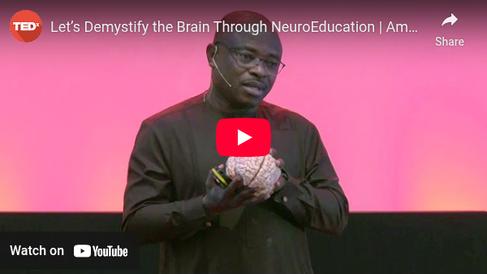
The Wits Head of the School of Anatomical Sciences at the Faculty of Health Sciences, Professor Amadi Ihunwo, delivered a TEDxJohannesburg talk titled “Let’s Demystify the Brain Through NeuroEducation”
As a Neuroscience expert, Ihunwo delved into upacking the critical role that neuroeducation plays in human development. Ihunwo demystifies the complexities of the brain, from structure to neuroplasticity He promotes brain literacy from primary schools to international forums by advocating for the worldwide integration of neuroeducation. He exhorts people to embrace neurotechnologies and make contributions to brain research.

His delivery presents a profound empowermentfocused adventure where the secrets to unleashing the potential of the mind lies in deepening our awareness of the functioning of the brain and finding useful applications for that information
A leader in his field, Professor Ihunwo has been in the realm of several professional bodies such as previously serving as the Secretary-general of the Society of Neuroscientists of Africa SONA Governing Council and being a current member of the International Brain Research Organization (IBRO), to name a few. Further to this, he is founder of the Brain Awareness Initiative (BWI) foundation.
*Watch
Facultyof HealthSciencesWelcomes
First-YearStudents!

the students experience as they transition university journey at Wits. This dynamic even acquaint students with vital resources and camaraderie and a sense of belonging academic community.
The day's agenda was filled with interactive activities such as quizzes Over 900 students participated in the induction, navigating through stations manned by the OSS, the Registrar’s Office, and Health Sciences Library staff members alongside Gateway to Success (GTS) ambassadors.
FACULTY NEWS
departments at the East Campus to commence their second year at the faculty’s Parktown campus Among those who are inducted into the faculty are graduates from their third year of study who entered the MBBCh program through the Graduate Entry Medical Programme (GEMP). Secondly, the ceremony entails an oath taking component specifically designed for
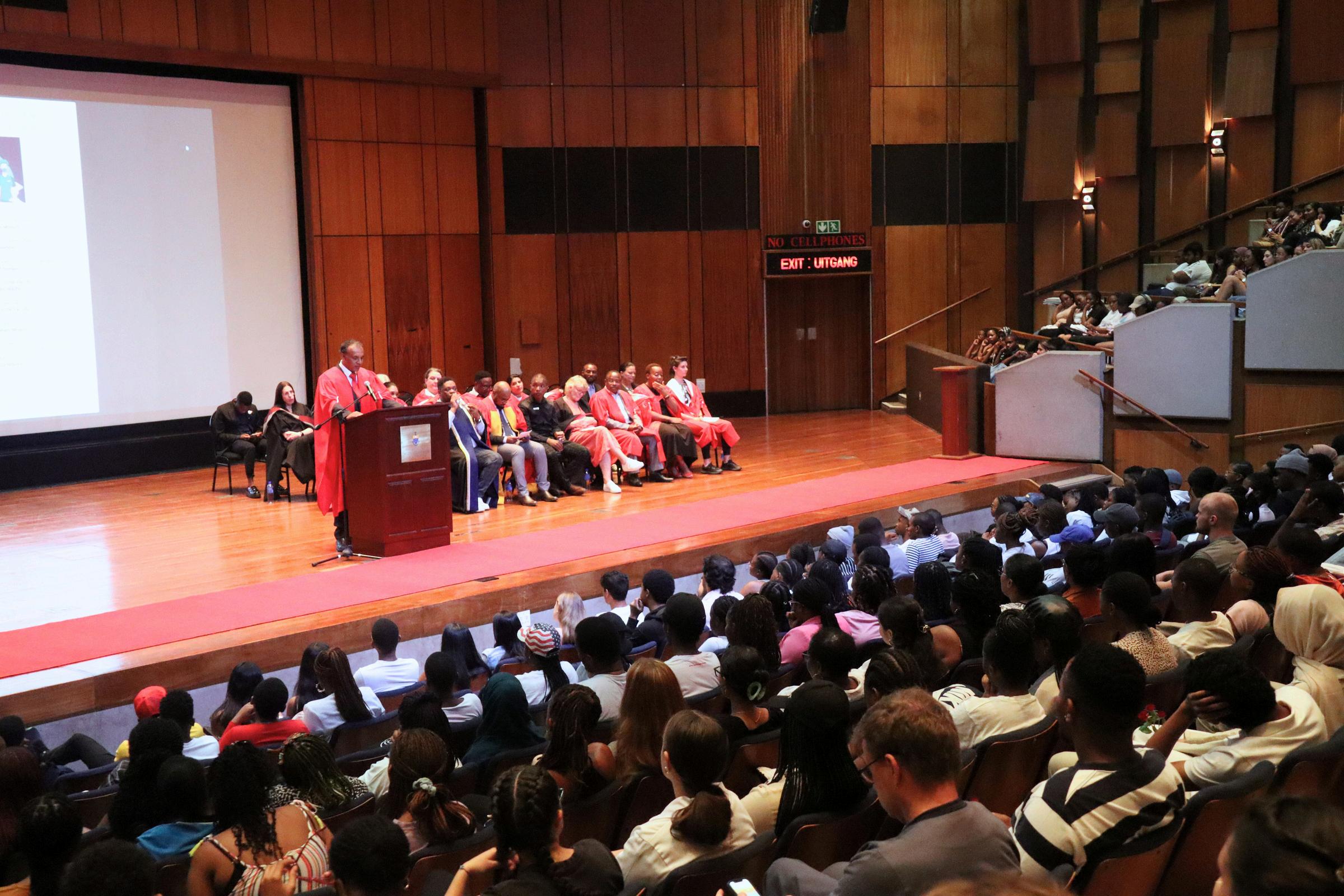
This was followed by the Faculty of Health Sciences' annual Welcome and Oath-Taking Day ceremony which saw the students being formally welcomed by the Dean, Heads of Schools and student council. The objective of this segment is divided into two folds. Firstly, it serves as a warm reception for new students embarking on their full-time enrolment within the faculty It includes those transitioning from other
As we reflect on the success of the Faculty of Health Sciences’ orientation to the first-year students, the faculty extends its heartfelt appreciation to all participants and facilitators whose contributions ensured the event's resounding success Throughout the year, the OSS will invest in continuous improvement to focus on supporting students.
Together, we are forging a vibrant and supportive academic community within the Faculty of Health Sciences.
NEWS
Faculty of Health Sciences Hosts Award Ceremony Recognising Staff Excellence
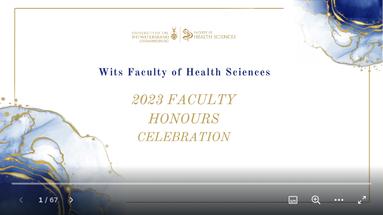
In a celebration of professional prowess and dedication, the Wits Faculty of Health Sciences recently hosted an award ceremony to honour its outstanding staff members. The annual event held at the Southern Sun Hotel in Rosebank honoured the remarkable contributions of professional staff and academic staff members in 2023. This focused on achievements and milestones attained.
“It takes a lot of individual diligence and deliberate partnerships for an institution such as our faculty to remain a beacon of excellence it takes you,” said Professor Lindelani Mnguni, the Deputy Dean of the Faculty, addressing award recipients
The ceremony was attended by the faculty’s esteemed fully-appointed and joint-staff members, students, as well as distinguished university guests. The speakers highlighted the tireless efforts and achievements of individuals who have significantly enriched the Faculty’s esteem locally and internationally.
Professor Mnguni further stressed how none of each individual’s talents and contributions are insignificant in continuing to build the faculty’s
great legacy to the country.
He said that it is not only important that institutional knowledge is passed on to each generation of professionals but to couple it with the innovation that will respond to challenges.
Among the 152 staff members who were recognised for the year, 64 were those who received long-service awards for ranging from 35 to 20 years of employment in the faculty.
Among the highlights of the evening were the presentations of awards recognising research excellence, and teaching and learning These accolades were meticulously curated to reflect the diverse talents and expertise within the faculty, underscoring the importance of fostering a culture of excellence and innovation in healthcare education and practice
To this, Deputy Vice-Chancellor Professor Lynne Morris noted that the faculty is a leading source of research outputs within the university and added that this quality of research and teaching positioned the faculty as a sought-after partner for collaborations – particularly internationally
ALUMNI
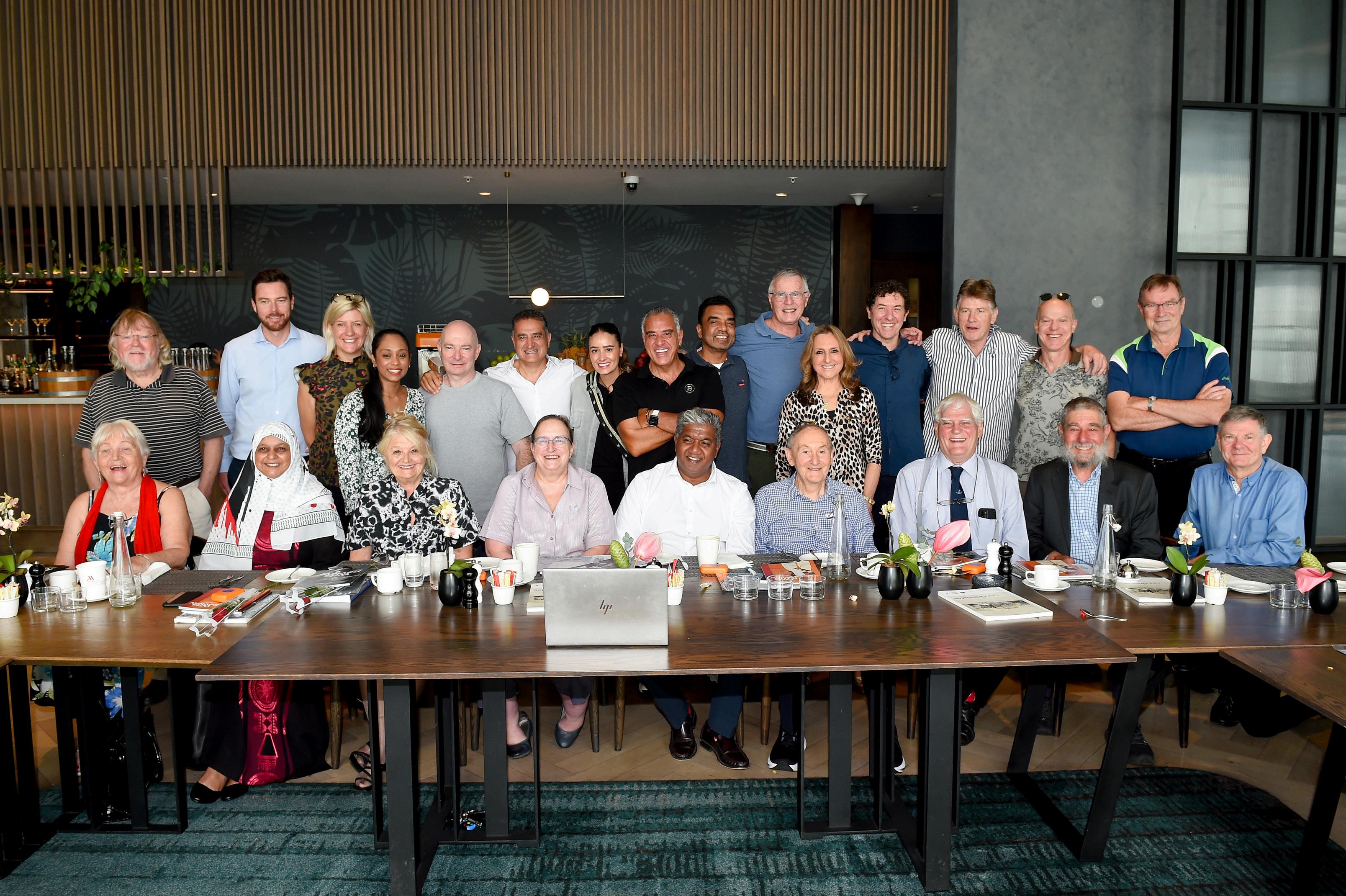
Dental alumni celebrate 40 years of graduation!
The class of 1984 former Wits Dental School students, along with former lecturers and lab technicians gathered for a reunion breakfast to remember the past and celebrate the present. *Read more
2
Wits Faculty of Health Sciences awards its own with an Honorary doctorate
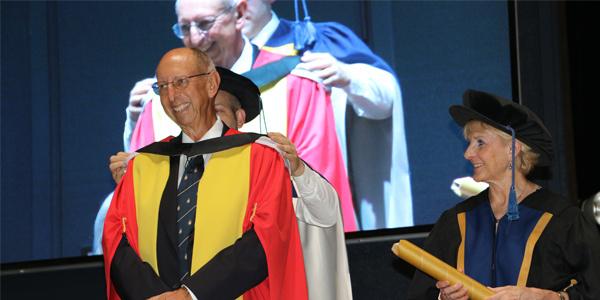
Professor Keith Klugman, an alumnus was honoured for his work to reduce deaths from pneumonia, neonatal sepsis, and meningitis in children. *Read more
3
Harvard ackn Professor St Tollman for h in rural SA

The Harvard T.H. Chan School of Public Health awarded Professor Stephen Tollman the 2023 Alumni Award of Merit for his outstanding contributions to population-based health research across Africa *Read more
3
WITSIE FEATURE: Professor Yosuf “Joe” Veriava’s Reflects on Wits

WHAT’S HAPPENING?
SydneyBrennerResearchSymposium
08h30-17h00,
Venue:NewTraining&TeachingCentre,7YorkRoad,Parktown Register
CARTAPhDFellowships2025
The Consortium for Advanced Research Training in Africa (CARTA) invites applications for itsprestigiousPhDFellowshipsfortheyear2025.
TheAnnualBJVRMemorialLecture
“HealthcareWorkers,SpiritualandPhysical HealersoftheNations”byDrImtiazSooliman Time:16h30
Venue:MarieCurieLectureTheatre
The Centre for Health Science Education will explore the emergence of technologies with experientialpedagogiesofescaperoomdesignforlearninginthehealthsciences. Register
Shortcourse:Humananatomyundertakenonhumancadavers
Venue:SchoolofAnatomicalSciences,7YorkRoad,Parktown

ONLINE | EVERY WEDNESDAY @12H00-13H00
This lunchtime webinar series is an interactive space where we explore how to incorporate new ideas into your teaching We will discuss ideas for practice through the lens of literacies. The concept of literacy in higher education has undergone substantial evolution, influenced by significant societal, technological, and educational changes. It now includes a broad spectrum of skills beyond mere reading and writing which are essential for academic success, lifelong learning, and active participation in a rapidly changing world.
This webinar will be hosted on Teams. No registration is required.
Click here to view the themes for the year.
Click here to sign up to receive weekly invites.
Q & A with the Expert Weekly Wednesday Webinar Focus Day
F2F | 15 APRIL @14H00-15H30

Topic: A curriculum to prepare graduates for AI enhanced practice
Speaker: Professor David Game
It is our privilege to host David Game in the Faculty of Health Sciences for this event. He is a veteran educator with a career interest in technology-enhanced education. He is the Senior Vice President Global Product for Elsevier, leading development of technologybased tools for enabling student learning. He is currently deeply involved in exploring the role of GAI in education and directing initiatives to bring AI enabled tools to students in the health sciences.
A thought-leadership event not to be missed!
Click here to register
On the couch

ONLINE
Scholarship of Teaching and Learning is nurtured through situated immersion in a Community of Practice Every week, CHSE hosts a session for education-interested people, focusing on those involved in postgraduate degrees in health science education Enculturation in the practices of Health Science Education research takes courage, motivation, patience and time – so come along and share your joys or angst as you journey towards the possible!
Click here to sign up to receive a calendar invitation to this series.
SAVE THE DATE: 4 JULY
Mark your calendars for the CHSE Focus Day on 4 July 2024. On this day we will explore the intersection of emerging technologies with emerging experiential pedagogies in the form of escape room design for learning in the health sciences
We look forward to your participation in this immersive experience.
Click here to register.
Workshops
The CHSE offers specialised training courses tailored to the unique demands of university teaching in health sciences
•Health Science Educators course (3 day)
•Learning & Teaching in a Blended environment
•Writing objectives and creating storyboards
•Curriculum mapping using LOOOP
•Making the shift: Time on task
•Practical decisions in authentic assessments
•Developing a Teaching Portfolio
Click here to learn more about the workshops available.

